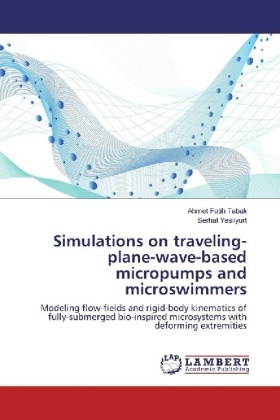Read more
A biologically-inspired micropropulsion method is studied via a series of CFD models managing time-irreversible inextensible wave propagation in a viscous medium. First, pump effect of a fully submerged and anchored thin-film with time-irreversible plane-wave propagation is analyzed by means of resultant channel flow, hydraulic power consumption, and efficiency while performing in a microchannel. Next, propulsion velocity, power consumption and hydrodynamic efficiency of a fully submerged and untethered bio-inspired microswimmer, employing single wave-propagating slender tail, are analyzed with respect to parameterized design variables. All models are governed by dimensionless incompressible Navier-Stokes equations subject to conservation of mass and incorporated with the arbitrary Lagrangian-Eulerian mesh scheme, simultaneously handling moving and stationary boundaries. The resultant rigid-body motion of the swimmer is modeled via incorporating interactions between surrounding viscous fluid and swimmer surface with the rigid-body kinematics, in 3D. Numerical results are compared with the asymptotical results to analytical studies, carried out earlier, based on 2D flow assumptions.
About the author
Dr. Ahmet Fatih Tabak is a Mechatronics Engineer (BSc 2005, MSc 2007, PhD 2012, Sabanci University) specialized in fluid-structure interaction associated with bio-inspired and bio-mimicking robots. He was faculty at Istanbul Commerce University, and is currently a post-doctoral fellow at the Max-Planck Institute for Intelligent Systems, Stuttgart.

